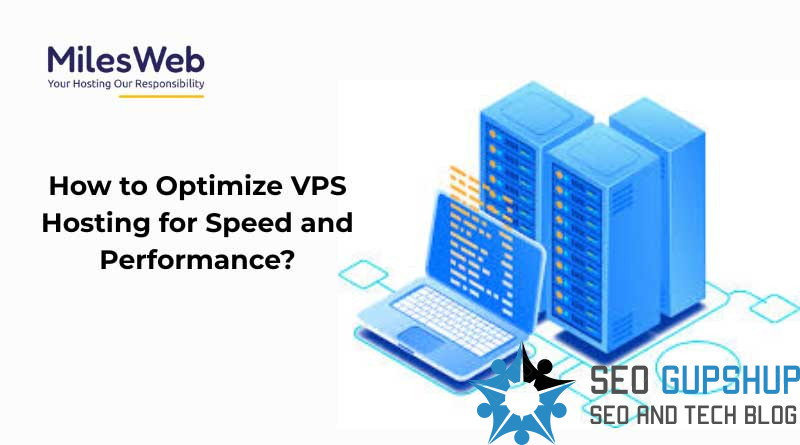With the ability to save a significant amount of money, the Virtual Private Server has gained enormous popularity. The best VPS server offers dedicated-server-like features at a reasonable cost. It also provides you with the best privacy and security while reducing the need for reserving the resources of an entire server. As a result, VPS can offer exceptional performance.
However, just like any other server, a VPS server can become inefficient and unresponsive if not managed and fine-tuned properly. With every passing second, websites that load slowly risk losing clients, reducing search engine rankings, and missing out on potential conversions. Thus, in this article, we will discuss effective techniques to optimize your VPS hosting services for enhanced performance.
Why Optimize Your VPS?
Even if a VPS server provides unmatched loading speed and productivity out of the box, if your website faces performance issues, or experiences downtimes, it’s time to fine-tune your VPS server. The default configuration settings are not optimized to ensure a lightning-fast loading speed and performance.
Optimizing a VPS server reduces memory usage, improves efficiency, and boosts website performance and productivity. If you want faster page loading speed, and reduced server load, here are the best actionable steps to achieve it.
Top VPS Optimization Techniques
1. Optimize your Apache Settings
Inappropriate Apache settings can be a huge issue and lead to reduced page speed and performance. Thus, you must customize your Apache settings as per your business needs to enhance your website and remove performance lags or other issues. It’s recommended to optimize the KeepAlive, StartServers, and MaxClients settings of your VPS hosting to ensure superior server performance.
2. Enable Content Caching
Caching your web page content is crucial to decreasing the latency issues and boosting website operations—particularly if your website often faces traffic spikes.
Caching stores frequently accessed content in RAM, reducing response times and improving page speed. So, when clients request page content, it will be delivered instantly from the cache rather than through the server processing, reducing wait times for users and ensuring a seamless experience. There are several types of caching you can deploy for your VPS, including Varnish, Squid, or Memcached caching.
3. Update the MySQL version
It’s always crucial to update the MySQL version, as it is an essential VPS server optimization technique. Older versions may not receive the periodic security updates and patches—resulting in poor website performance and making them easy targets for online cyberattacks. So, to gain unmatched performance and reduce response times, seek the latest MySQL version and use it rather than the older one.
4. Implement a Content Delivery Network
A CDN (Content Delivery Network) is an outstanding solution for faster content delivery. It stores static content on nodes–decreasing the distance between the VPS server and your clients. Additionally, these CDNs are distributed across worldwide data centers. Consequently, the content is delivered from the nearest global data centers for faster delivery and improved page speed when a client requests. However, with MilesWeb’s VPS hosting, you can effortlessly integrate a CDN to enhance website performance, minimize latency and ensure a smooth and secure browsing experience.
5. Optimize Website Content
Optimizing your website content results in superior server performance and page loading speed–including the media and images on your website. There are several free tools available in the industry that analyze your website content, like SEMrush, Ahrefs, Hemingway and much more. These tools specifically focus on the pain point of the website that needs optimization—offering speed and performance metrics for the best results. As a result, they also help enhance front-end website configurations and back-end server settings.
Additional Optimization Techniques
1. Optimize Image
Large-sized, uncompromised images can slow your website. You can leverage popular image compression tools such as TinyPNG or ImageOptim to decrease file sizes without compromising image quality.
2. Minimize HTTP Requests
Lower the number of elements on each page by combining CSS, and JavaScript files, removing unwanted plugins, and simplifying your website’s design.
3. Enable GZIP Compression
GZIP compresses your website’s data files, lowering their size and speeding up load times. Most VPS hosting platforms allow you to enable GZIP via server settings.
4. Periodically Monitor Performance
Use tools such as GTMetrix, Google PageSpeed Insights, or Pingdom to analyze your website’s performance. Address any issues that affect website performance and reliability. Additionally, if you are using MilesWeb’s VPS hosting, you can leverage their sturdy infrastructure to ensure a stable and high-performing website.
5. Use Server-side Caching
Use server-side caching mechanisms like Varnish Cache or Memcached to save frequently requested content. Caching minimizes the load on your server and boosts page loading times.
6. Resource Management
Avoid overwhelming your server with excessive applications or services that aren’t essential. Overloading your server drains critical resources, resulting in slower response times. Periodically review your usage and upgrade or downgrade resources such as CPU, RAM, and storage to ensure optimal performance.
7. Choosing the Correct OS
Linux servers are generally favoured for their resource efficiency compared to Windows servers. However, carefully analyzing your needs and choosing an OS that aligns with your server management skills and application requirements can considerably elevate your website’s performance.
Conclusion
While VPS hosting offers reliable performance right from the start, most users are still unaware that a few crucial optimization techniques—such as implementing content caching, updating the MySQL version, deploying a CDN, and optimizing content—can significantly enhance website performance.
A VPS server plays a key role in your website’s performance as it grows. Even if your VPS seems to be performing well, it’s always a great idea to take proactive steps to enhance its performance.
If you run an eCommerce business, host multiple websites, or manage resource-intensive applications, VPS hosting is the optimal solution. To help users transition to a VPS, prominent web hosting providers like MilesWeb offer sturdy features such as free website migration, full root access, NVMe SSD storage, and KVM Virtualization at a reasonable and transparent pricing structure—ensuring unmatched performance and business growth.

